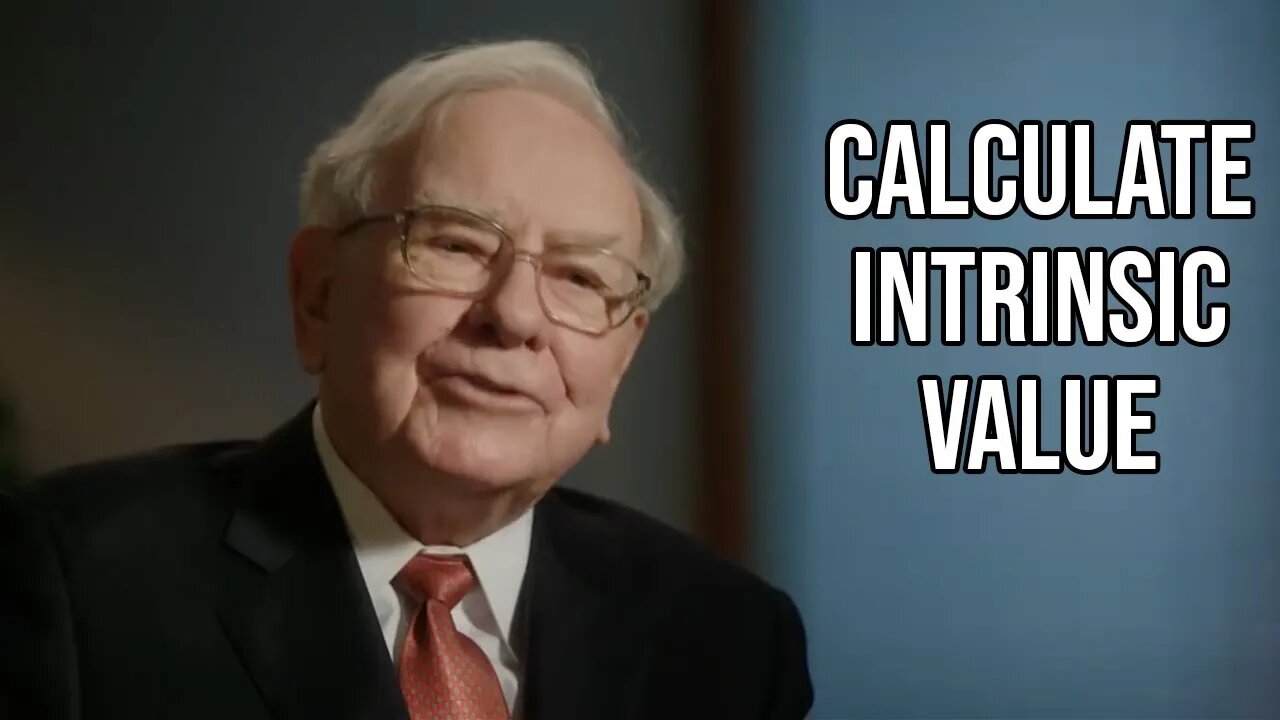Premium Only Content

How To Calculate Intrinsic Value (Full Example)
See My Portfolio & Where Opportunity Is In The Market (Discount): https://theinvestingacademy.teachable.com/p/theinvestingacademy?coupon_code=SALE&product_id=4455382
A step by step guide on calculating the intrinsic value of a stock. I've tried to make this as simple as possible. Hope it helps!
Link To Spreadsheet Calculator (Click File – Download – Excel):
https://docs.google.com/spreadsheets/d/1bL3jeo_6GqALjnOklR3t8fiALLi3L6cj/edit?usp=sharing&ouid=111488409422805504275&rtpof=true&sd=true
__________________________________
Intrinsic value, is arguably the most important thing to know when it comes to investing. Because if you can’t calculate the intrinsic value, then how do you know if you’re getting a good deal for the stock. How can you tell if you’re not overpaying? No intrinsic value = no idea if the stock is worth buying or not. As Warren Buffett says “the critical investment factor is determining the intrinsic value of a business and paying a fair or bargain price”.
So that brings us to the question, well how do we calculate the intrinsic value of a stock? That is what this whole video is going to be dedicated to. A simple step by step guide on calculating the intrinsic value of a stock.
How To Calculate The Intrinsic Value Of A Stock
Ok, Warren Buffett makes the definition of intrinsic value crystal clear. He said “Intrinsic value can be defined simply: It is the discounted value of the cash that can be taken out of a business during its remaining life”. So we look at the business. We determine how much cash it will generate over time. And then we discount these cash flows back to the present day.
In order to do this calculation we need 3 ingredients. 1 is the current cashflow. 2 is the cashflow growth rate. And 3 is the discount rate in order to discount the cash flows back to the present day and determine our current intrinsic value…
Step 1: Find The Cashflow Of The Stock
The reason why Buffett specifically said cashflow, instead of earnings is because earnings can easily be manipulated by the management team. But on the other hand, it is extremely hard almost impossible to manipulate the actual physical cash flows that a business generates. Put simply cash flow is more reliable than earnings.
So to find the cashflow it’s pretty easy in the modern day, all thanks to the internet. For this example I’m going to use Apple stock, since that’s quite a well-known talked about stock, even Warren Buffett owns it himself…
So the website that we use to get these metrics is called gurufocus. So let’s type in, Apple stock gurufocus… Than what we want to do is go to the DCF section. Discounted Cash Flow. And if we just zoom in right here, it will tell us what the current cash flow is for Apple stock. Right now, the free cash flow is $5.57. So remember that figure because we’re going to be using it soon. But before we need to determine what the growth rate is going to be for that cash flow…
Step 2: Determine The Cash Flow Growth Rate
Remember that Buffett said to calculate the intrinsic value, you need to discount the future cash flows of the business. In order to know the future cash flows, we need to know how much the current cash flow is going to grow by.
So for Apple the example that we’re using the current cash flow is $5.57. What will the growth rate be for this?
One of the best ways of determining future growth rate is by looking at the growth rate in the past. Then you can extrapolate this into the future. But you want to be conservative, and make it somewhat lower, since businesses grow faster at the beginning and start slow down.
So to find Apple’s past cash flow growth rate, just go to the exact same place that we were at before. Here is where we found the current cash flow. And here is where we see the past cash flow growth rates.
So don’t worry about the 1 year growth rate, it’s better to focus on the longer term ones. So over the past 5 years Apple has had an 8% growth. And the past 10 years it’s had 16.2% average yearly growth. If we look at the growth in earnings per share, it’s around the same numbers..
So in the future we can say that over the next 5 years we might see an 8% growth and the 5 years after that we might see around a 6% growth.
And now we have 2 of the key ingredients that we need to put into our formula for intrinsic value.
Subscribe Here: https://bit.ly/2Y1kNq8
-
 5:13:43
5:13:43
ItsMossy
14 hours agoHALO WITH THE RUMBLERS (: #RUMBLETAKEOVER
39.1K1 -
 1:54:08
1:54:08
INFILTRATION85
8 hours agoHi, I'm INFILTRATION
36.7K9 -
 7:51:03
7:51:03
GuardianRUBY
10 hours agoRumble Takeover! The Rumblings are strong
82.1K4 -
 4:28:45
4:28:45
Etheraeon
17 hours agoWorld of Warcraft: Classic | Fresh Level 1 Druid | 500 Follower Goal
56.7K -
 3:17:21
3:17:21
VapinGamers
9 hours ago $3.84 earned🎮🔥Scrollin’ and Trollin’: ESO Adventures Unleashed!
38.8K2 -
 LIVE
LIVE
a12cat34dog
10 hours agoGETTING AFTERMATH COMPLETED :: Call of Duty: Black Ops 6 :: ZOMBIES CAMO GRIND w/Bubba {18+}
256 watching -
 8:23:18
8:23:18
NubesALot
13 hours ago $5.44 earnedDark Souls Remastered and party games
32.7K -
 3:03:42
3:03:42
GamersErr0r
1 day ago $2.25 earnedits not what you think
26.5K1 -
 7:15:50
7:15:50
Phyxicx
10 hours agoRocket League with Friends! - 11/22/2024
20.1K1 -
 7:54:29
7:54:29
STARM1X16
11 hours agoFriday Night Fortnite
16.7K